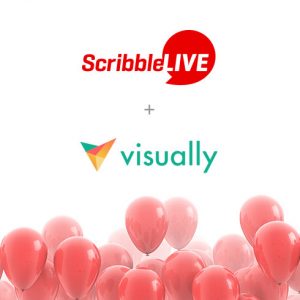In the 4th century B.C, Aristotle wrote in his book Politics: “Humans are social animals by nature”. Many other philosophers throughout history supported the truth behind Aristotle’s statement. L.S. Vygotsky acknowledged this in Sociocultural Theory of Human Learning and Marshall McLuhan said new communication technologies were building a “global village”.
We thrive in communities. Since birth, we learn how to read the world through others and we are hugely affected by the people we socialize with everyday.
Given immense global changes, people are spending more and more time online. In 2021, communities grow and form organically across social platforms where people connect every day throughout the globe.
These communities tend to form around passions and lifestyles. From politics, music, travel, technology, food, work and more, we are drawn more and more to one another in digital interest groups. We are wirelessly and digitally connected and means we’ve taken our “social animal” preferences to a whole new level.
But where do marketers and brands fit in? In this blog, we explore how brands can grow alongside digital communities organically and intuitively.
Communities and creators are the second topic of Rock Content’s blog series, created in partnership with Hootsuite, which considers the findings of Hootsuite’s Social Media Trends 2022 report.
Communities and creators
With so many communities, brands can now find existing communities to increase brand loyalty or they can build their own community around the brand.
The second option is much more laborious and takes many years to consolidate. Coca-Cola, Harley-Davidson and Converse have spent decades building and increasing their following.
This doesn’t mean you should abandon this idea, but there’s a high probability that a community that focuses on topics which are strongly related to your brand already exists. According to a Pew Research Center survey 90 million Americans engage in online groups.
You just need to buy your ticket to get inside these communities. But who sells it? Creators.
In 2022, the key to unlocking online communities (no matter the size of your business) is in the hands of digital creators. Whether it’s home cooks or Fortnite fanatics, creators add richness and value to these already existing interest groups
As the tide on social shifts away from glossy mega-influencers towards smaller and more authentic communities, brands that partner wisely with creators are connecting to new audiences, earning their trust, and gaining cultural capital.
Understanding creator influence
Creators acting as brand advocates isn’t a new concept. It’s been done for decades.
In the 1980’s, for example, Pepsi hired stars like Michael Jackson and Madonna to endorse its product among young people. The campaigns were a success. Many other brands have done the same throughout the years—includingNike with Michael Jordan and Calvin Klein with Justin Bieber.
But you don’t need to hire big celebrities to humanize and connect your brand with the public anymore. And this is especially great for small and medium businesses who don’t have millions of dollars hanging around for a campaign like this.
In fact, partnering with small and medium size creators can be much more effective (and cheaper of course) than dealing with celebrities.
Digital creators are regular people who create video content based on countless topics. People tend to identify with creators and trust their opinions more than celebrities and brands.
Partnering with digital creators can build trust around brands and make them reach more audiences.
As Amanda Wood, Head of Social Media Marketing at Hootsuite, told usin a recent interview, “communities are at the heart of a successful social strategy, and content creators and influencers have built networks where their visibility and sway are truly powerful. But it’s not the size of the audience that brands should be getting distracted by; it’s the quality of the interactions and engagement that matters. If brands can partner with the influencers that have fostered these kinds of unique relationships, they truly have the chance to connect to an entirely new audience on social—one that is already paying close attention.”
But choosing which creators to partner with—and which platforms to find them on—can be tricky. Before jumping into any partnership, you need to first understand your audience’s preferences. Are they on TikTok or do they prefer to watch videos on Youtube? What are their demographics? What tone of voice should be used? This report by Hootsuite is a great resource to help you figure out these preferences.
When the fashion-tech startup WANNA promoted their new Augmented Reality app “Wanna Kicks”, they clearly aimed at millennials and Gen Z. That’s why they partnered with the creator @josephwsj, which became one of their first collaborations.
Victoria Fedorova, Brand Marketing Manager at WANNA, said through email that “as the sneaker culture nowadays became more about statement pieces and status than just sports performance footwear, we wanted to reach our potential audience in their everyday lives rather than going after fashion or sports-oriented creators”.
WANNA wanted to drive app installs, increase brand and product awareness, and grow their app community by partnering with TikTok creators seemed to be a great strategy.
Ultimately, creators need to keep up with cultural trends, social changes, and everything that impacts a consumer’s daily life.
Brands are already seeing impressive results
That’s exactly what BigDUG had in mind when they partnered with TikTok creator @TheP00lGuy. BigDUG is a UK’s shelving, racking and storage company that typically sells to large and medium size enterprises.
But when the pandemic hit, they shifted their focus to a more domestic customer. With more people spending time at home, there was a rise in DIY online sales in the country. In the US, the situation is similar.
@TheP00lGuy (a.k.a. Miles Laflin), a pool cleaner and home improvement creator in TikTok, was the perfect match for the brand to reach this new audience. He created a video where he used a BigDUG shelf to organize his stuff before cleaning a dirty pool. More than 1.5 million viewed this and it received more than 150k likes. With these results, they decided to partner with Miles on four other projects.
That’s not an isolated case. Many brands are finding that creators are the gateways to awareness within communities.
One of the best features about the videos creators made for brands is that they are very distinguished from traditional marketing. And that’s especially great for Generation Z (ages 9 to 24), who really don’t pay attention to traditional marketing.
The branded content made by digital creators can take the form of a dance, a prank, comedy, and silly antics.The idea is to make ads that don’t look like conventional ads.
Another partnership example between Newton Baby and three creators @tayandthetwins, @thecarlinfamily, @mollythemom proves this point. The company, known for their quality crib mattresses, wanted to reach the audience at TikTok to raise awareness in a relaxed and funny way.
The result was a series of pranks the creators did with their partners to highlight how easy it was to clean the mattresses. The engagement rate across all videos was almost at 20%.
Partnering with creators is a long-term strategy
The digital creator market is not just about TikTok or isolated campaigns.
In November 2021, Creating Culinary Communities (C3), a global food tech platform, launched an entire division inside the company with the help of creators, Youtubers and gamers. This platform is dedicated to promoting delivery-only restaurants.
C3 already has more than 6 million subscribers, but with the new division they expect to reach more than 165 million Gen Z consumers by 2025, according to Restaurant Dive. Their goals are to build a community of creators to raise awareness and to reach a more expansive audience.
The food tech company is not alone as the creator economy is already showing quantifiable results. Research conducted by Youtube and Oxford Economics stated the Youtube’s Creator ecosystem “contributed $20.5 billion to the US economy in 2020 and supported 394,000 full-time equivalent jobs”.
With that vast amount of money being invested in digital creation and the numerous opportunities available, creators are on the move, too.
Digital creators make their moves
The eSports organization FaZe Clan is one example. They have a considerable following on their Youtube channel (8.6 million subs) and on Twitch (405k followers) where they stream competitions and post a wide array of content. They are planning to become a publicly traded company at a $1 billion valuation. This will enable their organization to seek more lucrative content deals.
Some other digital creators, like the D’Amelio family, who host a half-hour show on Hulu, and TikTok star Addison Rae, who starred in the film He’s All That on Netflix, are starting to get their spaces in the streaming business.
Creators are expanding their reach and becoming more aware of their potential as personalities that can be a strong link between brands and customers.
The digital creator market is heated and already moves a lot of money. It is a trend which has the potential to shape the future of marketing, especially as GenZ enters the job market and becomes decision makers within their organizations.
Marketing is becoming more personalized. Companies are realizing the value of developing communities and creating connections across a variety of platforms.
Do you want to get more insights about what social media marketing holds for 2022? Check out Hootsuite’s Social Trends 2022 interactive report. There you’ll find everything you need to know to shine in social media in 2022!







